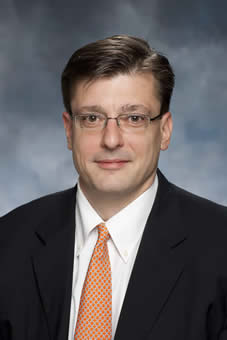Jennifer Forbes
Communications & Public Affairs
732-235-6356, jenn.forbes@umdnj.edu
Surgical Research Team Works to Save Lives and Reduce Health Costs by
Identifying Leading Risk Factors for Deadly Post-operative Infection

New Brunswick, NJ -- Sepsis, a life-threatening bacterial infection of the blood, is an unwanted and costly complication to patients and the health care system. New research at UMDNJ-Robert Wood Johnson Medical School has identified major elective surgeries in which sepsis occurs most often post-procedure, along with extenuating conditions such as age, gender and type of hospital that increase the risk for sepsis. The study, published in the December issue of the Annals of Surgery, forms a basis to create post-operative procedures to reduce the risk of infection for patients, thereby saving lives and reducing health costs.
The research team evaluated more than 6.5 million elective surgical cases between 2002 and 2006, of which at least 78,669 cases developed postoperative sepsis. Led by Todd R. Vogel, MD, MPH, assistant professor of surgery at UMDNJ-Robert Wood Johnson Medical School and director of the vascular laboratory at Robert Wood Johnson University Hospital, the study is believed to be the largest-population-based analysis evaluating the rates, risk factors, mortality and cost associated with postoperative sepsis after elective surgery.
The research indicates that esophageal, pancreatic and gastric procedures represented the greatest risk for the development of postoperative sepsis. However, according to the study,
these did not account for the greatest mortality rates. Thoracic, adrenal and hepatic (liver-related) procedures were associated with the highest risk for mortality when sepsis occurred.
“Patient safety can be dramatically improved through the use of checklists. However these are used mostly prior to surgery,” said Dr. Vogel, a vascular surgeon. “The identification of high-risk groups in our study can be utilized to create intervention checklists following surgery that may reduce septic infections and mortality, along with the significant costs of treatment and hospitalization associated with postoperative complications.”
Specifically, according to the study, cardiac and colorectal procedures are good targets for which to develop intervention measures to prevent sepsis, because they are performed more frequently than other surgeries. “Decreasing septic complications for these surgeries may have the most financial benefit to the health care system,” Dr. Vogel said.
Sociodemographic factors and hospital characteristics also contributed to the risk of sepsis. The study showed that older patients, men, ethnic populations and those at an economic disadvantage were more likely to develop sepsis. The reasons for this finding remain unclear, and the researchers suggest that this may be secondary to educational level, access to care or the extent of the disease when treated.
Finally, the type of institution at which surgery is performed also contributes to the risk of developing sepsis. Patients in larger hospitals, in urban hospitals and in nonteaching hospitals were at an increased risk of post-operative infection. “This suggests that improvements to the delivery of care be directed toward the prevention of postoperative complications,” said Dr. Vogel.
In addition to Dr. Vogel, members of the surgical outcomes research group in the department of surgery at UMDNJ-Robert Wood Johnson Medical School who contributed to the study were Viktor Dombrovskiy, MD, PhD, MPH, assistant professor; Jeffrey L. Carson, MD, professor; Alan M. Graham, MD, professor; and Stephen F. Lowry, MD, professor and chair of the department.
About UMDNJ-ROBERT WOOD JOHNSON MEDICAL SCHOOL
As one of the nation’s leading comprehensive medical schools, UMDNJ-Robert Wood Johnson Medical School is dedicated to the pursuit of excellence in education, research, health care delivery, and the promotion of community health. In cooperation with Robert Wood Johnson University Hospital, the medical school’s principal affiliate, they comprise New Jersey’s premier academic medical center. In addition, Robert Wood Johnson Medical School has 34 other hospital affiliates and ambulatory care sites throughout the region.
As one of the eight schools of the University of Medicine and Dentistry of New Jersey with 2,800 full-time and volunteer faculty, Robert Wood Johnson Medical School encompasses 22 basic science and clinical departments, hosts centers and institutes including The Cancer Institute of New Jersey, the Child Health Institute of New Jersey, the Center for Advanced Biotechnology and Medicine, the Environmental and Occupational Health Sciences Institute, and the Stem Cell Institute of New Jersey. The medical school maintains educational programs at the undergraduate, graduate and postgraduate levels for more than 1,500 students on its campuses in New Brunswick, Piscataway, and Camden, and provides continuing education courses for health care professionals and community education programs. To learn more about UMDNJ-Robert Wood Johnson Medical School, log on to rwjms.umdnj.edu. Find us online at www.Facebook.com/RWJMS and www.twitter.com/UMDNJ_RWJMS.
###


 Back to News Releases
Back to News Releases

